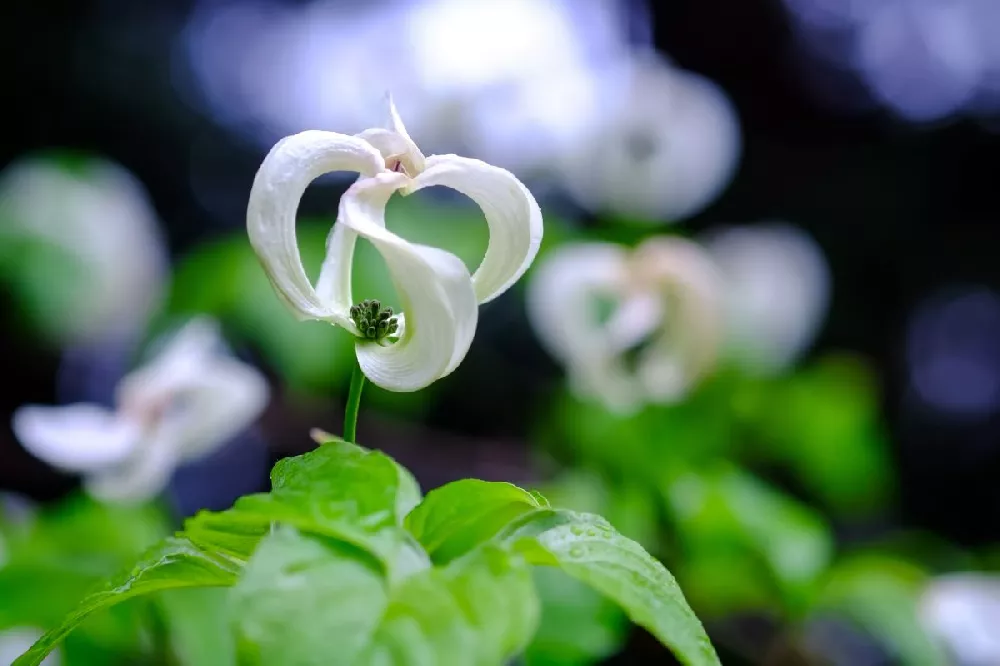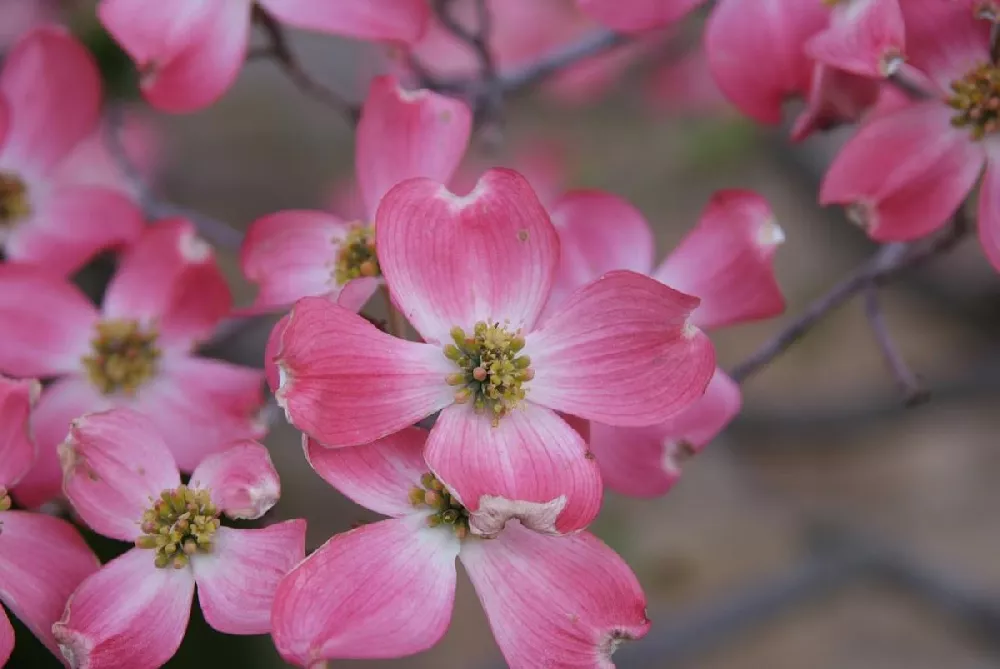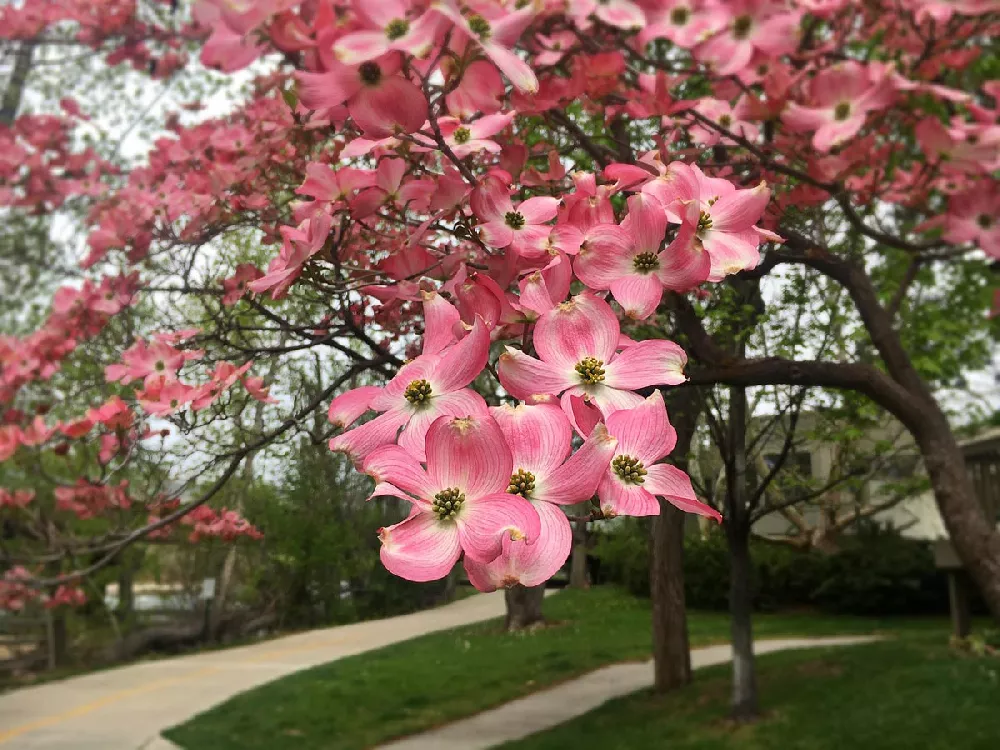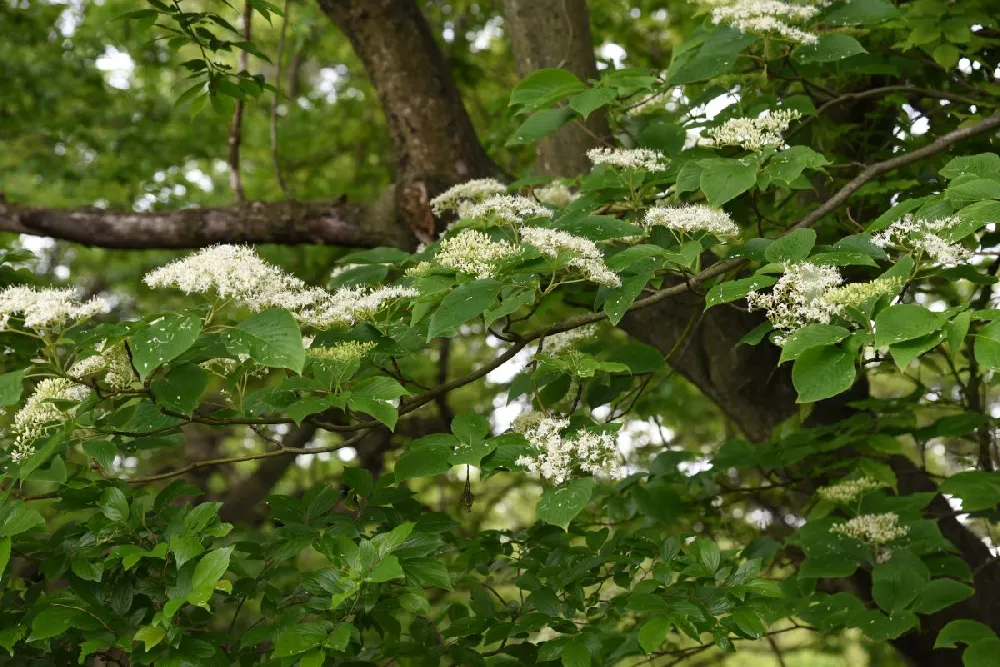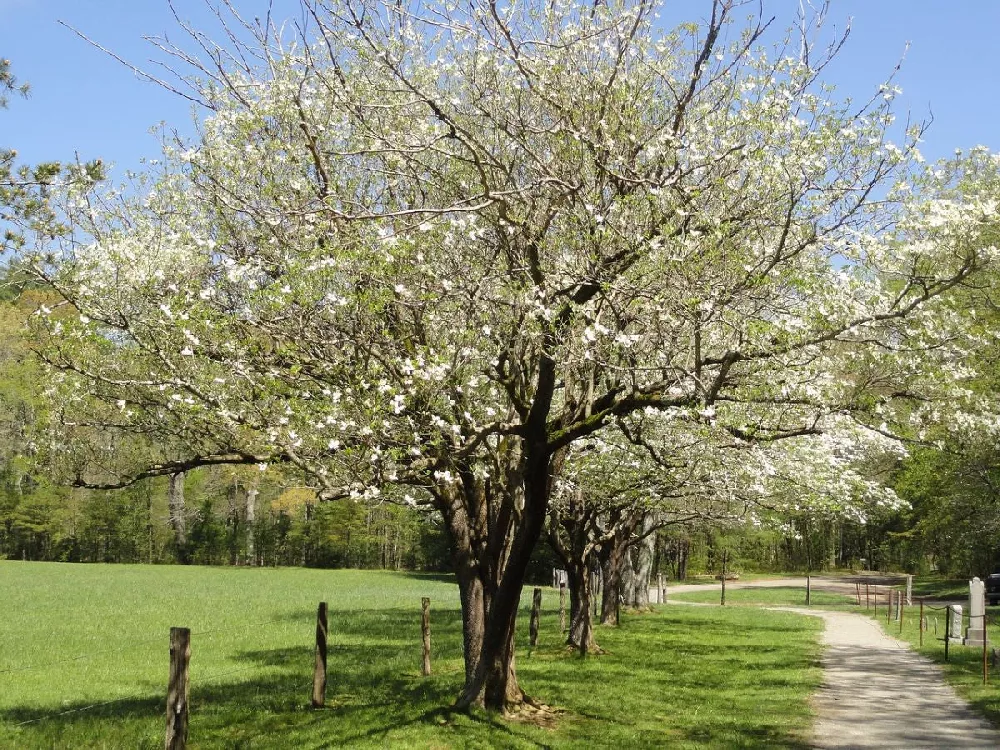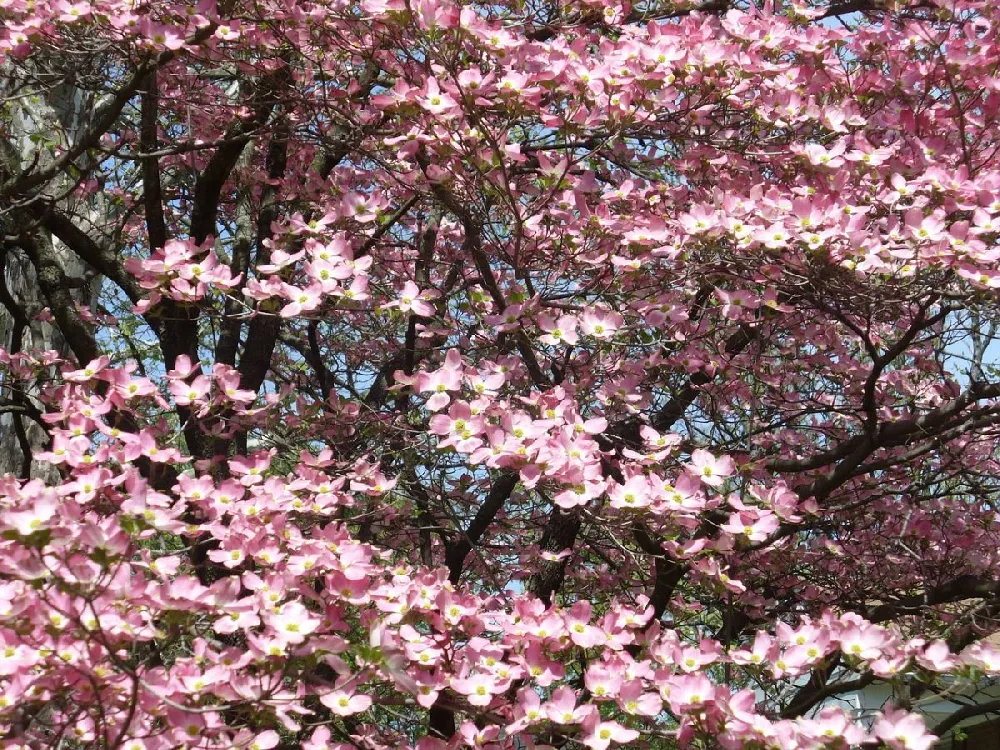Mexican Flowering Dogwood Tree for Sale - Buying & Growing Guide
There are hundreds of dogwood cultivars growing in the U.S., but one of the most unusual and striking varieties is the Mexican Flowering Dogwood, Cornus florida var. Urbiniana. Like most flowering dogwoods, it has attractive creamy white "flowers" — actually bracts — that appear in late spring. But, unlike any other variety, the bracts of the Mexican Flowering Dogwood curl around and join at the top, forming a perfect sphere that surrounds the actual tiny green flower. It's a unique display that will attract attention if you plant your tree in a visible location. The trees are easy to care for and resistant to common diseases of the species such as dogwood anthracnose. Here are a few more reasons to add this pleasing tree to your garden or landscape:
- In fall, glossy red fruit attracts songbirds.
- Leaves turn red in the fall and remain on the tree longer than most.
- Winter interest is provided by distinctive textured gray-brown bark.
Enter your zip code to find nearby stores that may carry this plant.
Plant Care
Sunlight

The Mexican Flowering Dogwood prefers partial shade — about four hours of direct sunlight a day.
Watering
Water whenever the soil two inches below the surface is dry, generally about twice a week.
Fertilizing

Fertilize in early spring with a balanced, slow-release product designed for flowering trees and shrubs.
Planting and Care
Planting instructions
Site your flowering dogwood where it will receive about four hours of direct sunlight a day. One good option is to place it in a spot with morning sun and afternoon shade. If you’re in the northern parts of its range, full sun, six or more hours of light, will be fine. Unpot your sapling and tease out any encircling roots, which can girdle the tree and slowly kill it. Dig a hole that’s as deep as the root ball and two to three times as wide. Place the tree in the hole, spreading out the roots. Holding it upright and steady, fill in around it with topsoil that’s been mixed with organic matter such as well-rotted compost or manure, tamping down as you go to eliminate air pockets. Water thoroughly. Apply a two to three-inch layer of organic mulch such as bark chips around the tree’s root zone to conserve moisture and hinder weed growth but keep it from touching the trunk to avoid problems with rot.
Watering and nutrients
When newly planted, water your dogwood every few days until you see signs of robust new growth on the branches. Then, scale back your watering to once a week, giving it about an inch of water each time. If your weather is very hot or dry, increase your watering schedule. Fertilize with a balanced, slow-release product designed for fruit trees in early spring, and then again later in the summer if the package directions indicate you should do so.
Pollination
The true flowers of the dogwood, which are tiny and clustered at the center of the white bracts, emit pollen that is attractive to bees and other pollinating insects. These do the hard work of spreading the pollen from flower to flower, resulting in small, glossy red fruits called drupes, which contain the seeds.
Pruning
The Mexican Flowering Dogwood doesn’t need annual pruning in order to maintain an attractive shape. Your primary task when pruning is to remove any dead, diseased or damaged limbs, as well as any that are rubbing up against each other. This is best done in spring, before bud break.
Pests, diseases, and animals
The Mexican Flowering Dogwood is not prone to any pest infestations or diseases and is resistant to the most common dogwood disease, anthracnose. Pests you may see on your tree include aphids, whitefly and scale insects. A healthy tree can usually manage infestations on its own. If the infestation is severe, consider releasing predatory insects such as ladybugs and lacewings to fight them. Infrequently, a tree may show signs of powdery mildew and canker, and root rot is also occasionally seen on the trees. Keep the area around the tree free of leaf litter and debris, and always water at the base of the trunk, keeping leaves dry.
Achieving maximum results
Siting your tree in the best possible location is one way to achieve maximum results. In very hot climates, such as the southern U.S., it will do best if it is shaded from the hot afternoon sun. Place your tree where it is protected from any prevailing winds, in soil that drains well and is fertile. Dogwoods do best in acidic to neutral soils. It’s easy to test the soil’s acidity yourself with an inexpensive soil testing kit, which you should be able to find in your local garden center or online. Keep an eye on your tree’s watering needs. Too much water may cause the leaves to turn light green, and you may see this if you have a very rainy growing season. Too little water, on the other hand, will lead to drooping leaves.
FAQs
Where can I grow a Mexican Flowering Dogwood?
This dogwood is hardy down to 10 degrees Fahrenheit, which means it can be grown in USDA hardiness zones seven through nine. This includes most of the southern U.S. and coastal areas of the West Coast, with the exception of the subtropical regions of southern Florida.
How big does the Mexican Flowering Dogwood get?
A mature Mexican Flowering Dogwood may reach a height of 15 to 30 feet, with a width of 15 to 20 feet. However, it is a slow-growing cultivar that will take decades to reach maturity.
How is this tree best used in my landscape?
With four seasons of interest, the Mexican Flowering Dogwood makes an excellent specimen tree when planted in a highly visible location where it can be admired by those passing by. Consider a small grove of three or five spaced near each other on a sloping front lawn, underplanted with shade-loving perennials such as astilbes or lilyturf. It would work well in front of a larger, darker tree such as an evergreen, where the white flowers will stand out even more. It would also mesh well with plantings in a cottage garden or Asian-themed garden.
